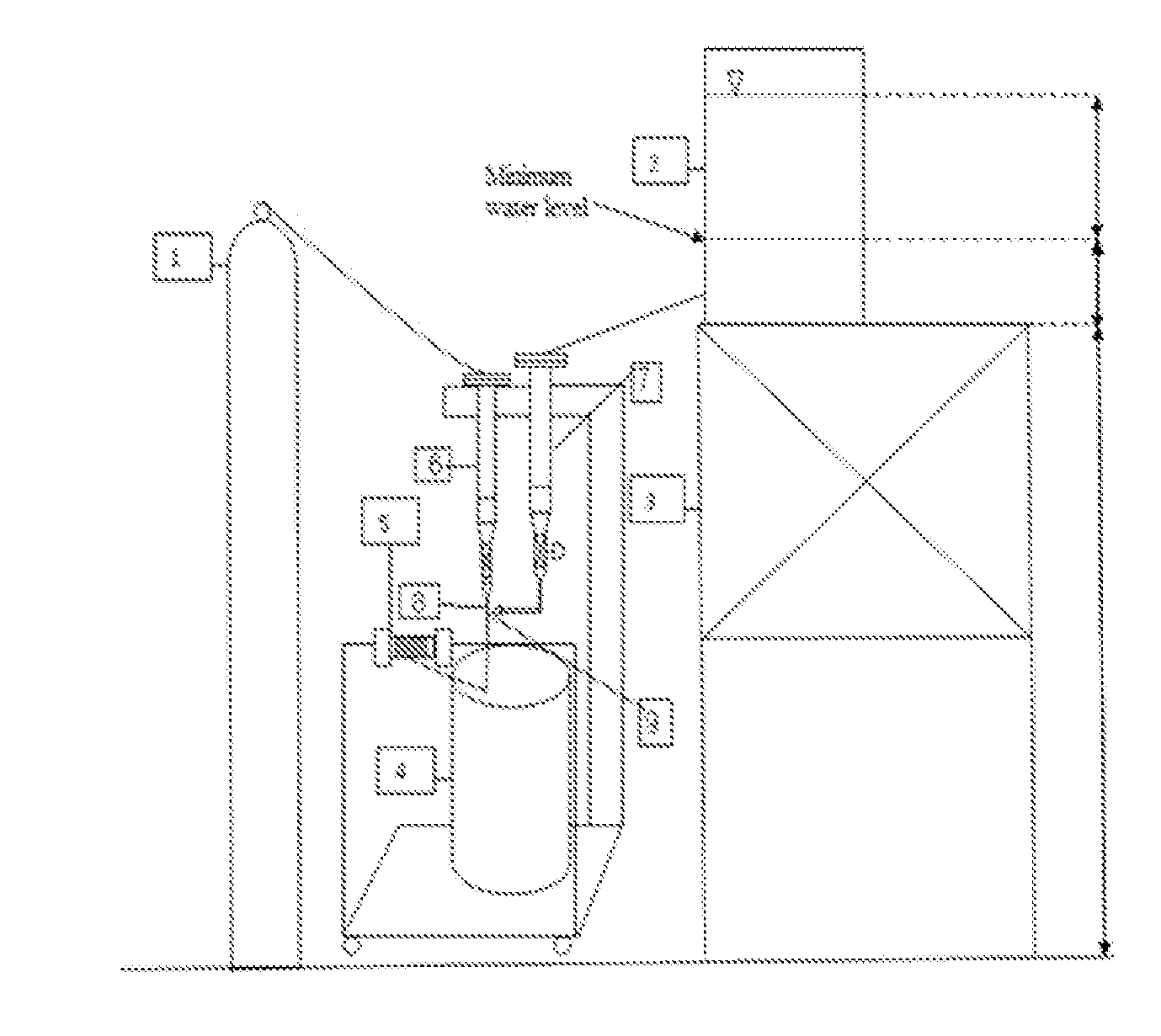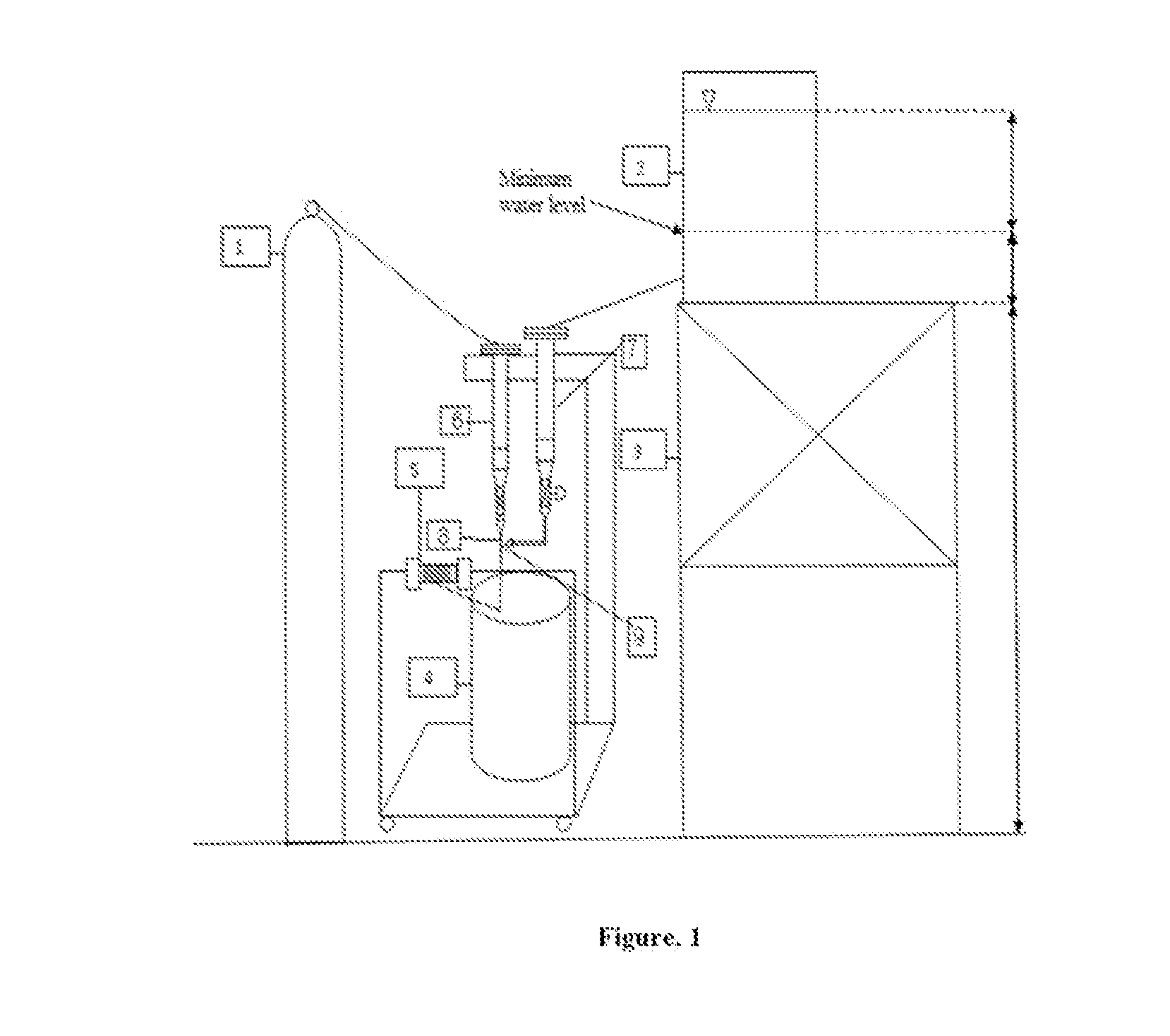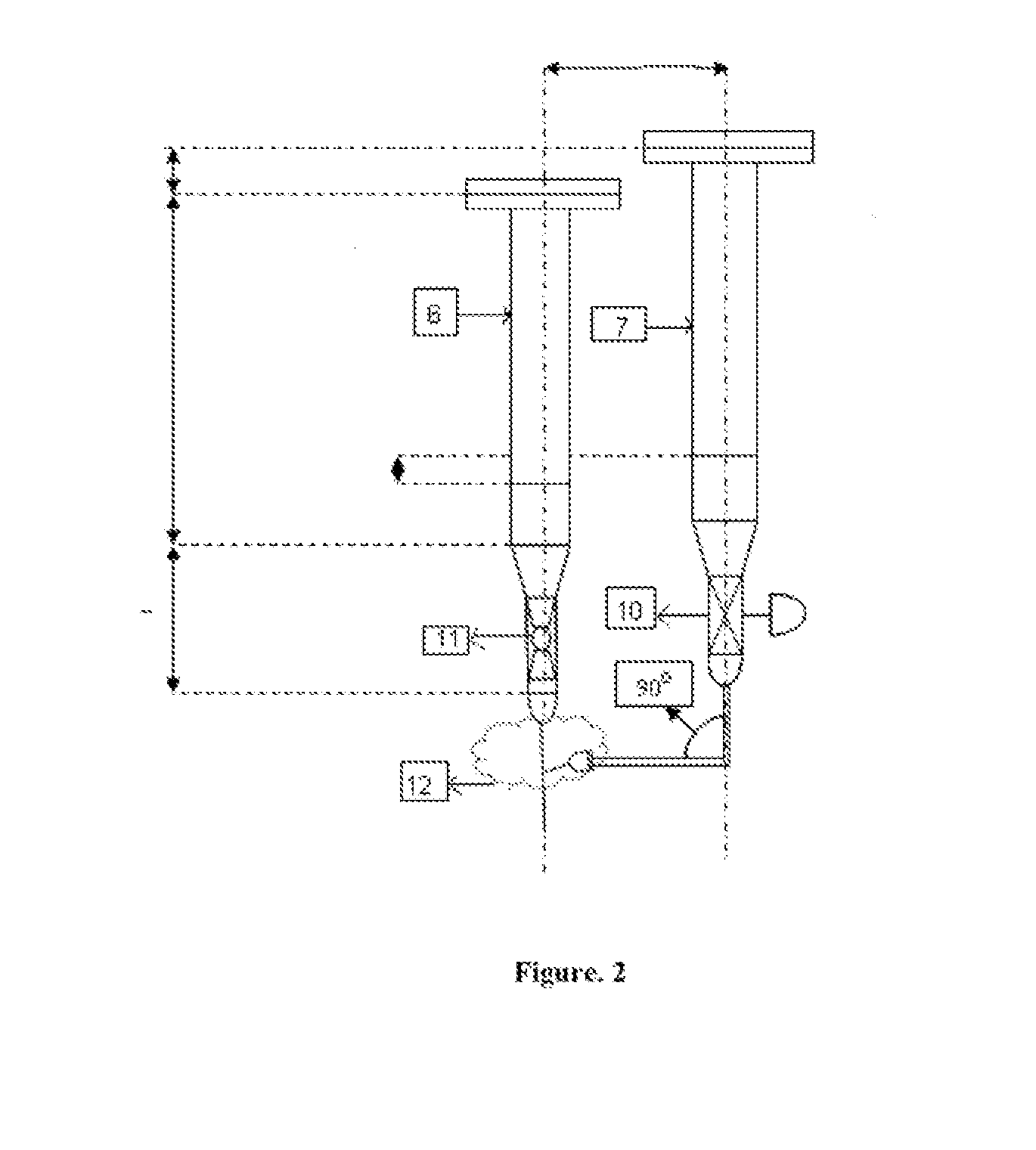Low cost spinning and fabrication of high efficiency (HE) haemodialysis fibers and method thereof
a technology of haemodialysis fibers and low cost, which is applied in the field of apparatus and method to spin hollow fibres of dialysis grade, can solve the problem of final cost of cartridges, and achieve the effect of convenient manufacturing
- Summary
- Abstract
- Description
- Claims
- Application Information
AI Technical Summary
Benefits of technology
Problems solved by technology
Method used
Image
Examples
example 1
[0045]In the present example, the water permeability is measured by using pure distilled water at various transmembrane pressure drops. The permeate flux is measured at various transmembrane pressure drops and flux versus pressure drop data are plotted. This results into a straight line through origin as pure distilled water does not have any osmotic pressure. The slope of this curve gives the value of membrane permeability. It indicates how porous the hollow fiber is. This is represented in FIG. 5A.
example 2
[0046]In this present example, experiments are conducted using various solutes, like, polyethylene glycol of various molecular weights (400 to 35,000), dextran (70,000), etc., at 1,000 ppm and at about 12 kPa pressure and 20 l / h cross flow rate. The rejection values were measured by using the following formula:
R=(1-cpc0)×100%(1)
[0047]FIG. 5B represents the data. It is observed that the 90% rejection of solutes occur at around 6000 Da (6 kDa), hence by definition, this is the MWCO of the spun membrane.
[0048]In fact, varying the wt. % of PVP, a variety of membranes of the specified dialysis grade can be spun, the details are given in Table 2.
TABLE 2Range of Molecular Weight Cut Off (MWCO)Sl. NoPVP wt. %PEG wt. %MWCO1136223143331743044
example 3
[0049]In this example, the diffusive permeabilities (PD) values of the membrane is calculated. It is calculated as:
PD={lnΔC1(t1)ΔC2(t2)}S{1Va+1Vb}(t2-t1)(2)
where, ΔC(t) is the difference between the solute concentrations in the solutes and dialysate reservoirs at the sampling time, t1 and t2, V is the reservoir volume; S is the surface area of the membrane, t is the time
[0050]The experiments are conducted in usual dialysis mode and the PD values obtained are reported in the following table:
TABLE 3Diffusive permeabilties of the membranePolymer Blend MembraneReported ValuesComponents(×10−4), cm / s(×10−4), cm / sUrea14.115.2Creatinine7.48.8Sucrose1.92.4Vitamin B120.220.25BSA00
PUM
| Property | Measurement | Unit |
|---|---|---|
| angle | aaaaa | aaaaa |
| diameter | aaaaa | aaaaa |
| diameter | aaaaa | aaaaa |
Abstract
Description
Claims
Application Information
 Login to View More
Login to View More - R&D
- Intellectual Property
- Life Sciences
- Materials
- Tech Scout
- Unparalleled Data Quality
- Higher Quality Content
- 60% Fewer Hallucinations
Browse by: Latest US Patents, China's latest patents, Technical Efficacy Thesaurus, Application Domain, Technology Topic, Popular Technical Reports.
© 2025 PatSnap. All rights reserved.Legal|Privacy policy|Modern Slavery Act Transparency Statement|Sitemap|About US| Contact US: help@patsnap.com



